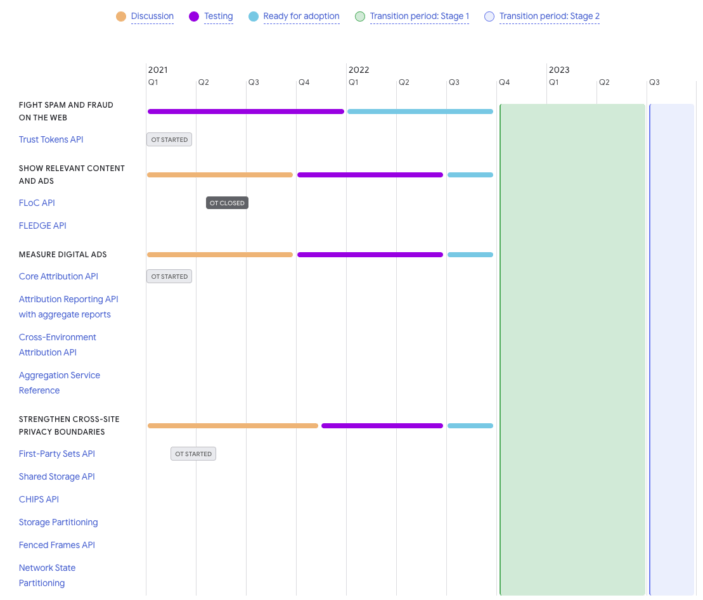
The timeline (shown above) divides initiatives into four categories (“fight spam and fraud on the web,” “show relevant content and ads,” “measure digital ads,” and “strengthen cross-site privacy boundaries”). The phases indicated on the timeline are as follows:
- Discussion – The technologies and their prototypes are discussed in forums such as GitHub or W3C groups.
- Testing – All technologies for the use case are available for developers to test and may be refined based on results.
- Ready for adoption – Once the development process is complete, the successful technologies are ready to be used at scale. They will be launched in Chrome and ready for scaled use across the web.
- Transition period: Stage 1 – APIs for each use case are available for adoption. Chrome will monitor adoption and feedback carefully before moving to next stage.
- Transition period: Stage 2 – Chrome will phase out support for third-party cookies over a three-month period finishing in late 2023.
This timeline provides search marketers with a general idea of when various Privacy Sandbox initiatives should be ready for adoption. That can give marketers some indication as to whether the company will meet its new deadline (late 2023) to deprecate third-party cookies.
Transition period: Stage 1 (in which APIs for each use case are available for adoption) is currently forecasted to begin Q4 2022. Sometime after that, we should have a clearer picture of what advertising with Google looks like as third-party cookies are phased out.
More on the news
- APIs shown on the timeline are based on Google’s current expectations and are subject to change. The timeline will be updated monthly.
- Google expects Stage 1 of the transition period to last nine months. At some point during Stage 1, the company will announce a new timeline that decreases third-party cookies’ “Time to Live.”
- The transition period will begin once APIs for all of the use cases are ready for scaled adoption. Chrome will announce the start of the transition on the timeline page and on the Keyword blog.



